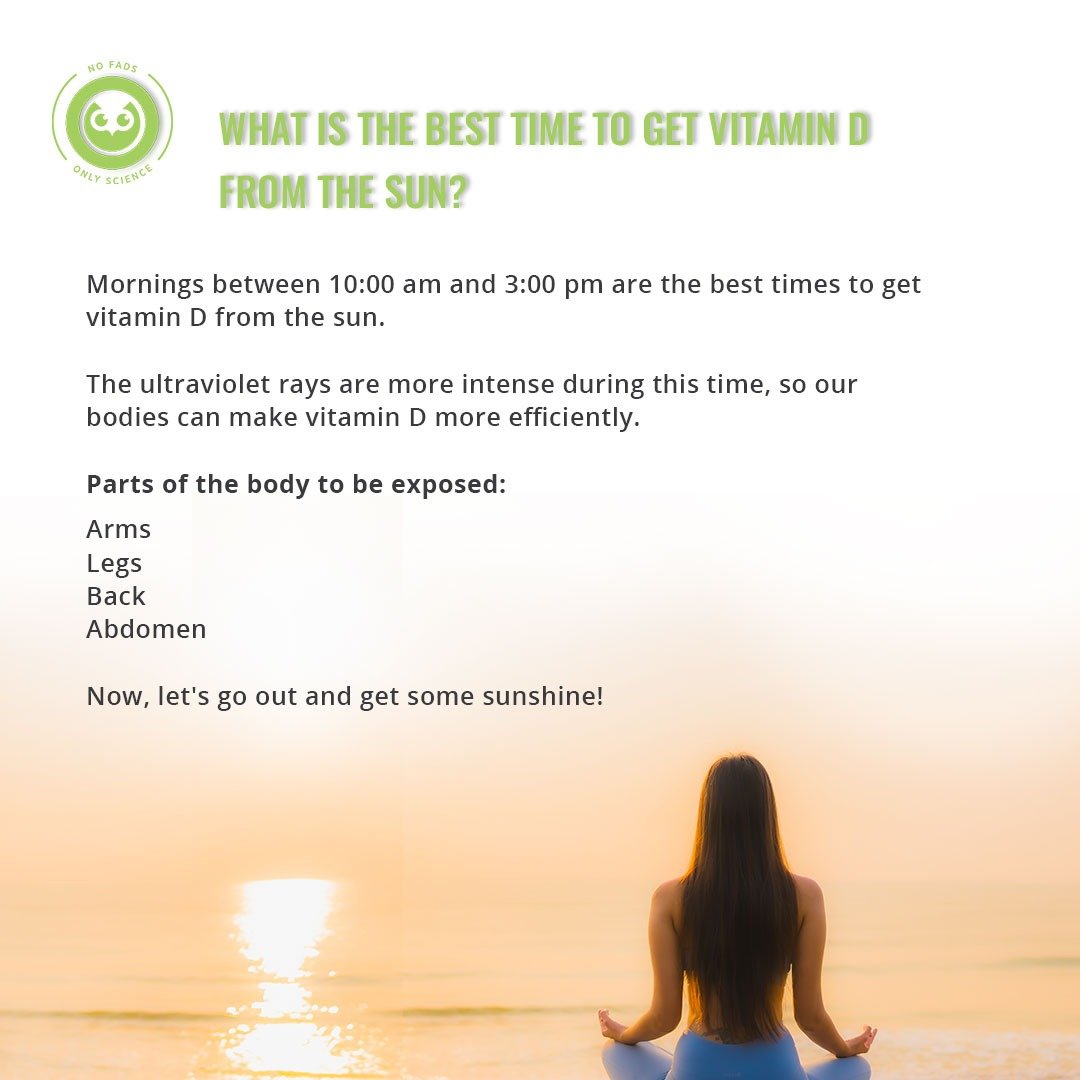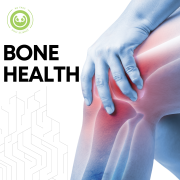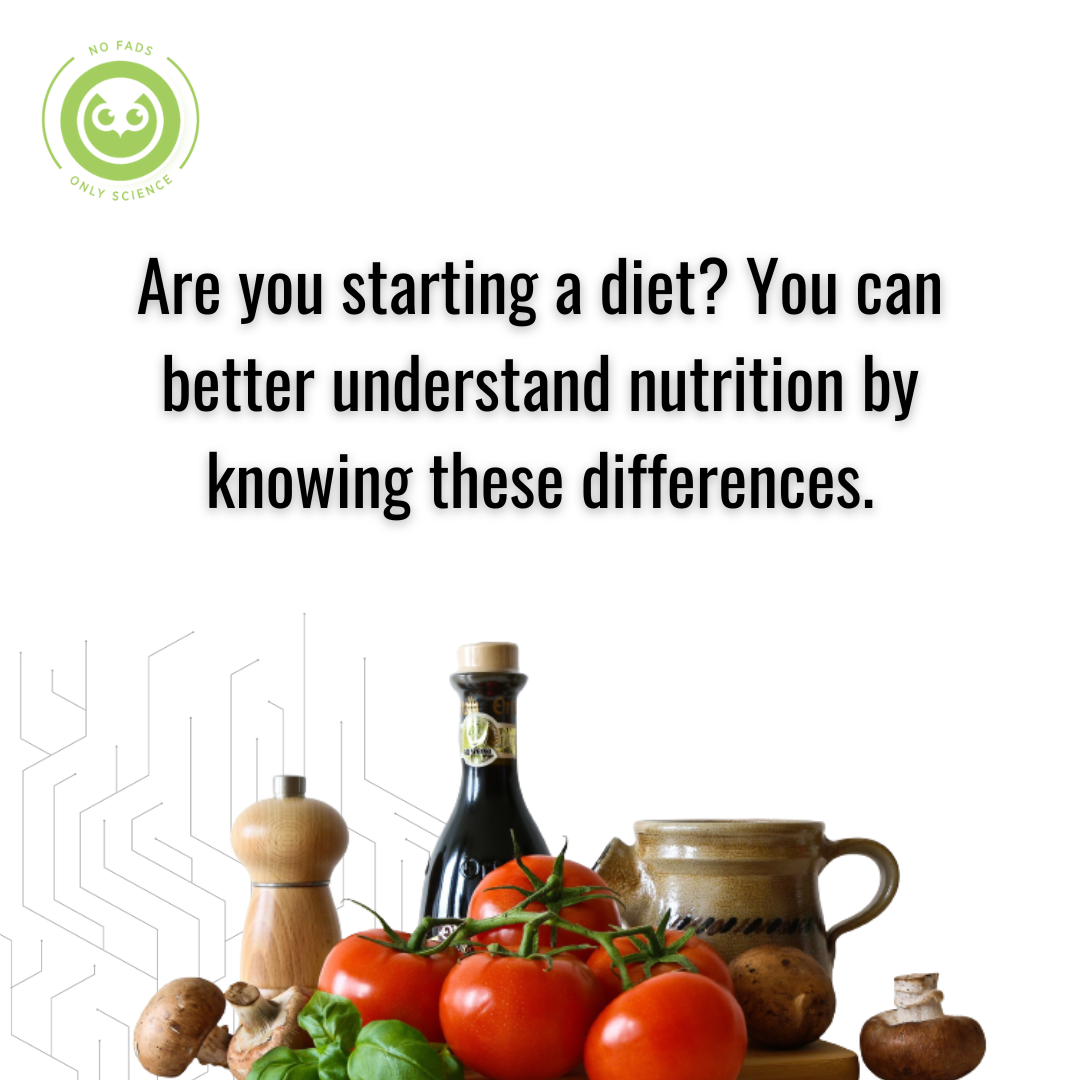Are you familiar with your macros and micros?
Our body requires sufficient nutrition for survival, as it also helps in body function and staying healthy in general. Food is the primary source of our daily nutrient requirements followed by supplements that help to boost the nutritional level of our body.
As seen in the previous article, food, nutrition and, nutrients are three different entities that are interrelated but not the same.
Food is the primary source of energy while nutrients are part of the food that nourishes us.
Then what does nutrition imply?
Nutrition represents the entire process by which we get our required energy and nutrients from food.
Once we understand this basic difference between food and nutrition, the next step is to know about our macros and micros.
Macros and micros are short forms of macronutrients and micronutrients. The nutrients in food are divided into macros and micros based on the amount required by the body.
In this article, we will talk in detail about macros, micros their functions, types and deficiency.
MACRONUTRIENTS
As the name implies macronutrients are required by our body in large quantities. These nutritive components are needed by our body to maintain energy and structure.
Our body cannot synthesize macronutrients and hence they must be obtained through diet. It is also crucial to note that a healthy diet never excludes or limits the intake of any macronutrient.
There are three main macronutrients and they are equally important for our body to function properly.
They are as follows:
Carbohydrates
Protein
Fat
CARBOHYDRATES
Carbohydrates or carbs are the body’s primary energy source. It is also involved in providing energy to the central nervous system i.e our brains. Carbohydrates are broken down by our body into glucose or sugar molecules, which act as an energy source. Carbon, hydrogen and oxygen are the three elements that make carbohydrates.
Around 60% of our calorie requirement per day should be fulfilled by carbohydrates. They are present in both healthy and unhealthy food. Therefore, it is important to make sure that our carbohydrate requirement is fulfilled by healthy food sources.
Carbohydrates are further classified as-
Starches
Fibre
Sugars
Starches are complex in nature and have intact fibres. On the other hand, Fibres are also complex carbohydrates and are mostly present in plant-based foods. These help in digestion
Of the three types, sugars are simple carbohydrates that can easily be broken down and absorbed by the body.
Some of the best sources of carbs include Rice, Wheat, Millets, Fruits, etc…
The most commonly asked question is about sugar cravings.
We often feel the urge to snack on sugary foods. But do we crave sugar or sweet-tasting food?
Here’s a simple test to find out.
Keep a bowl of sugar and try eating it fully.
Not able to finish the bowl?
Then you are not craving sugars but looking for hyper-palatable foods to comfort yourself.
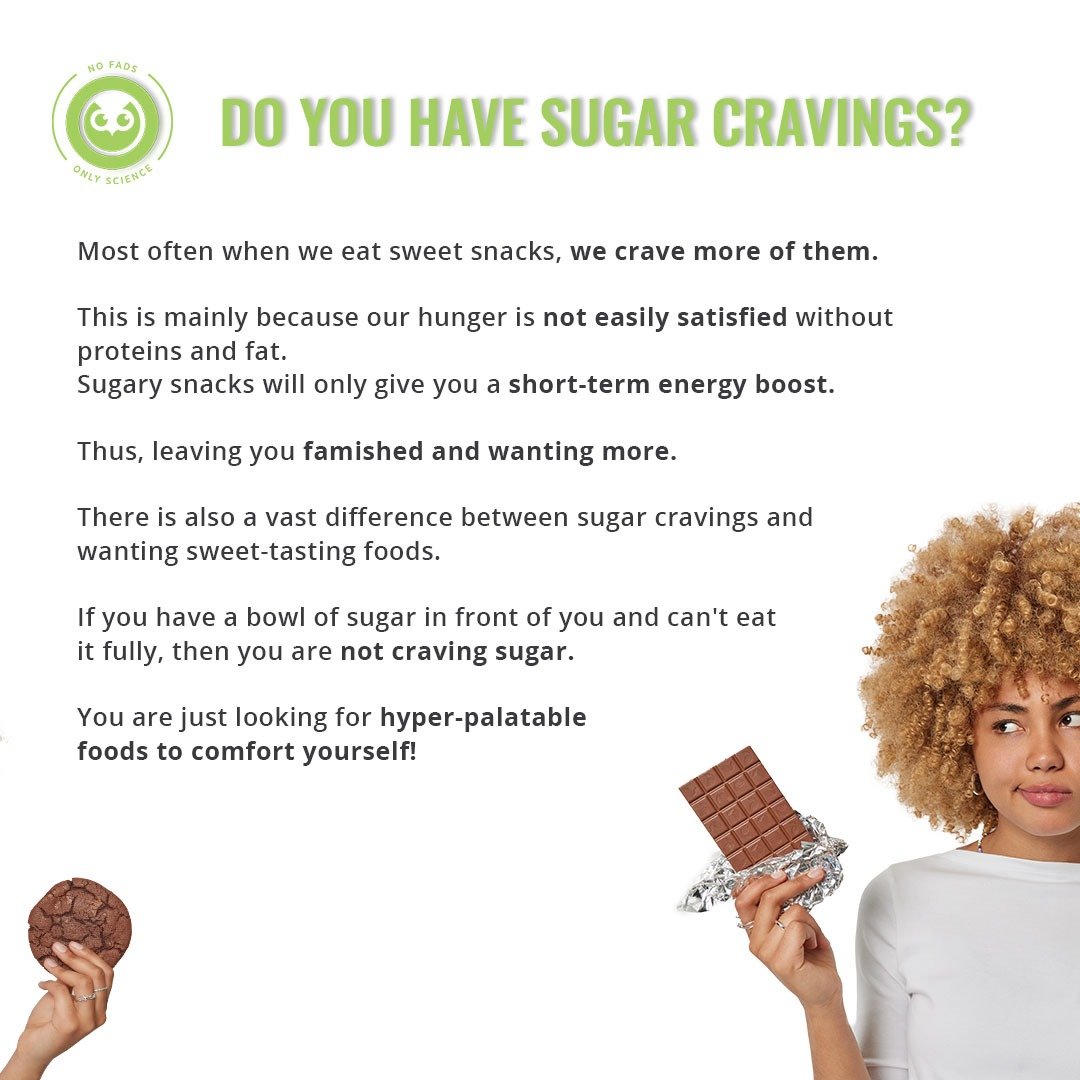
PROTEIN
Protein intake is very important as it is required by all the cells in our body to function properly.
It plays a vital role in tissue structure, hormones, metabolism, and transport systems.
It is also involved with enzymes that regulate metabolism and balance the acid/base environment of the body.
Proteins are made of amino acids and are found throughout the body. They make up many enzymes, haemoglobin, and antibodies. Amino acids are the building blocks of protein which are classified as essential and non-essential.
The protein requirement for each individual will vary depending on their age, medical condition, health goal, etc… On average 25% of the calorie requirement must be fulfilled by the protein intake.
Some sources of protein are eggs, meat, poultry, legumes (sprouted), paneer, tofu, soy, fish, and seafood.
Now as we understand the importance of proteins, it is also crucial to address the common perception that eating too much protein might cause kidney problem
Eating the required amount of protein won’t cause any harm when consumed within the required limits.
You need to be cautious about protein intake only when kidney function is already affected.

FAT
Fats from food provide the body with energy and help in other functions like insulating organs and making up the cell membrane.
It is also involved in the absorption and transportation of fat-soluble vitamins. Other functions of the fat include brain and nerve function, and hormone balance.
About 15% of daily calories should be from fat intake. It should also be noted that the fat type and source are important to prevent adverse health effects.
Fat, in general, is classified into :
Saturated fat
Unsaturated fat – MUFA, PUFA, Omega 3, and Omega 6
Trans fat
Saturated fats are solid at room temperature due to their chemical structure. They tend to be high in cholesterol, hence consuming foods rich in saturated fats tends to cause more diseases.
On the other hand, unsaturated fat such as Monosaturated fat and Polysaturated fat is known as healthy fats. They help to control cholesterol at healthy levels.
It is always better to balance out saturated fats with other types of fats such as MUFA and PUFA.
Trans fat comes from industrial fat processing where saturated or unsaturated fats are processed by adding hydrogen ions to them.
Trans fats are also solid at room temperature.
The process of adding hydrogen ions is known as hydrogenation and they extend the shelf life of the product.
Good sources of fat include nuts and seeds, fatty fish, oil, butter, and ghee.
One of the most common thoughts that comes to our mind when we talk about fat is that it may increase our weight.
In reality, though fat contains more calories when compared to protein and carbohydrates it doesn’t mean that you will gain weight. Weight gain occurs only when there’s a calorie surplus. Fats in fact slow down digestion and help to make us feel satiety.
Excess calories from carbohydrates and protein can also be stored in our body as fat, increasing our overall weight.
Thus, the key to a healthy meal plan is having a balanced diet.
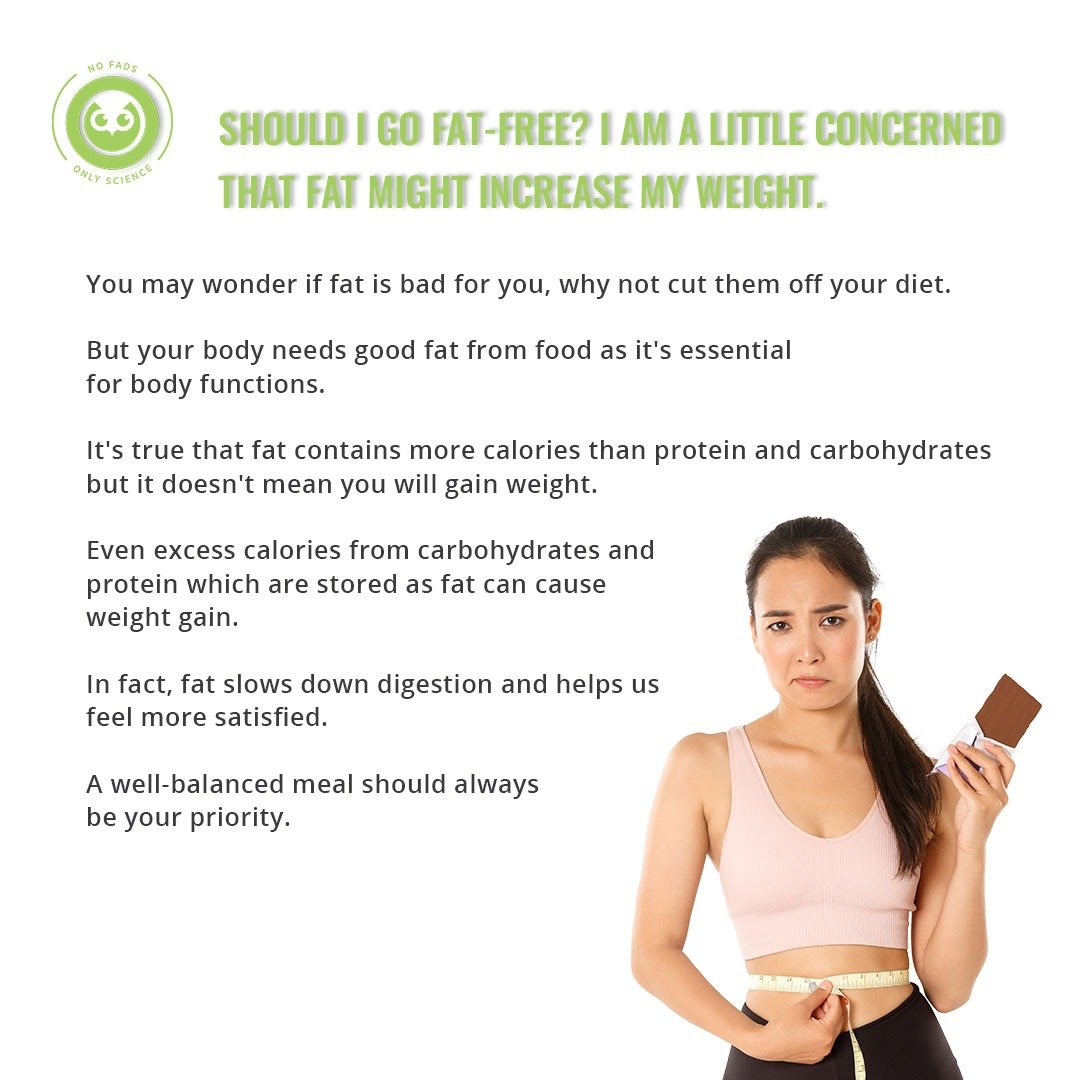
MICRONUTRIENTS
Micronutrients are required by our body in small quantities and but still, they cater to various important body functions.
Therefore, their deficiency can cause serious effects.
The term micronutrient encompasses both vitamins and minerals. It can also be classified as essential and non-essential micronutrients based on the ability of the body to produce them. It is estimated that around 30 vitamins and minerals cannot be synthesized by our body. And hence, they have to be made available through food intake or supplements.
VITAMINS:
In general, vitamins can be categorized as essential nutrients as most of them can’t be synthesized by our body and even if they are produced, the quantity is not sufficient.
Heat, acid or air can degrade vitamins as they are organic compounds produced by plants and animals.
It offers a wide range of health benefits such as boosting the immune system, aiding brain and nervous system functioning etc.
Based on solubility, vitamins are further classified as Fat-soluble and Water-soluble vitamins.
Fat-soluble vitamin
They are predominantly found in high-fat foods and are also better absorbed into the bloodstream when consumed with fat.
Fat-soluble vitamins include-
– Vitamin A
– Vitamin D
– Vitamin E
– Vitamin k
Water soluble Vitamins
Water soluble vitamins are cannot be easily stored by the body as they dissolve in water upon entering the body.
Since they are not stored in our bodies, we have to get them regularly through diet.
Water-soluble vitamins include-
– Vitamin B1 – Thiamine
– Vitamin B2 – Riboflavin
– Vitamin B3 – Niacin
– Vitamin B5 – pantothenic acid
– Vitamin B6 – pyridoxine
– Vitamin B7 – Biotin
– Vitamin B9 – Folate
– Vitamin B12 – cobalamin
– Vitamin C
The major food source of vitamins is fruits and vegetables.
MINERALS:
Minerals are inorganic compounds from the earth that are required for optimal body functions.
It helps in strengthening bones, preventing tooth decay, carrying oxygen, and supporting the immune system.
Minerals are classified based on the quantity required by the body as major minerals and trace minerals.
Major minerals:
– Magnesium
– calcium
– phosphorus
– sulfur
– sodium
– potassium
– chloride
Trace minerals:
– Iron
– Selenium
– Zinc
– Manganese
– Chromium
– Copper
– Iodine
– Fluoride
– Molybdenum
Sources: Fruits, vegetables, nuts, milk and dairy products, Fortified foods, egg yolk.
We can see from an overview of macronutrients and micronutrients that micronutrient deficiency is more common.
Let us see in detail the common micronutrient deficiency –
Vitamin D
Vitamin B12
Iron
Iodine
Calcium
VITAMIN D:
It is one of the important fat-soluble vitamins that is needed for maintaining serum calcium levels and for bone density.
Vitamin D must be obtained from the sun, but it is evident from research that we don’t get enough from the sun.
We can get vitamin D from food sources such as egg yolk, mushrooms, dairy products, and fortified dairy products. But they are not sufficient so it’s always better to consume a supplement.
Deficiency:
Deficiency of vitamin D mostly leads to low bone density and can also lead to osteoporosis in adults
What causes Vitamin D deficiency?
When we don’t get enough vitamin D from food or the sun, our body cannot convert vitamin D into its active form.
Who is at risk?
People with malabsorption syndrome ( Crohn’s disease )
People with chronic kidney disease (where kidney won’t be able to convert vitamin D)
People with hyperparathyroidism ( where the body’s calcium levels are controlled by too much thyroid hormone)
How to prevent it?
You can combat vitamin D deficiency by taking supplements
What is the best time to get vitamin D from the sun?
The best time to get vitamin D from the sun is morning 10:00 am to 3:00 pm.
It is said that ultraviolet rays are intense during this time and our body can more efficiently make vitamin D
UV rays from the sun are classified based on their wavelengths as UVA, UVB, and UVC. UVB rays are responsible for producing the active form of Vitamin D in our bodies.
Additionally, it only takes a small amount of UV rays for our bodies to produce vitamin D. Therefore, we don’t have to expose ourselves to the sun for a long period. Excessive UV exposure will only damage our skin.
VITAMIN B12:
Vitamin B12 also known as cobalamin is a water-soluble vitamin that can be stored in our liver and can be used in the later stage of life when we absorb less vitamin B12.
Source: fish, shellfish, dairy products, nutritional yeast
Function:
To form and maintain a healthy nervous system
Deficiency:
Leads to neurological problems – poor memory, dementia, psychosis
Megaloblastic anaemia / pernicious anaemia (reduction in healthy RBC)
Depression
Loss of appetite and weight loss
Who is at risk?
Since B12 is mostly obtained from animal sources, vegetarians and vegans are at risk for vitamin B12 deficiency.
Older persons (who cannot absorb enough B12 from food)
Malabsorption syndrome
Symptoms:
Tingling sensation in feet
Muscle weakness and numbness
Weakness and fatigue
Irregular heart rate
How to prevent it?
You can either choose to have vitamin B12 shots (injection) or can have supplements.
CALCIUM:
Calcium is the most abundant mineral found in our body and is associated with our bone health.
It is also linked with parathyroid hormone, vitamin D, and calcitonin.
Functions:
Formation of bones and teeth
Linked with bone cell formation and destruction
Muscle contraction
Transmitting nerve impulses
Sources:
Green leafy vegetables
Nuts and seeds
Fish
Calcium-fortified foods
Symptoms:
Muscle aches
Numbness and tingling sensation in hands and feet
Low bone density (bones get fractured easily)
Confusions, memory loss
Who is at risk?
Malnutrition and malabsorption
Certain genetic factors
Women at the menopausal stage
Those who have less vitamin D levels
How to prevent it?
Add more calcium-rich foods to the diet
Take calcium supplements.
IRON:
Iron forms an essential part of proteins and enzymes. Thus, it takes part in many vital functions of the body such as aiding muscles to store and use oxygen.
Sources:
Dietary iron can be classified into heme and non-heme iron where heme iron comes from animal sources and non-heme iron comes from plant sources
Heme Iron:
Fish
Organ meats
Red meat
Non-heme Iron:
Raisins
Prunes
Pumpkin seeds, sesame seeds
Dark green leafy vegetables
Beans and legumes
Function:
Formation of red blood cells
Oxygen transport
Produces anaerobic energy
Makes up proteins and enzymes
Deficiency:
Iron deficiency is the most common worldwide
Iron deficiency anaemia is a condition in which our blood lacks healthy red blood cells.
Symptoms:
Brittle nails
Less immunity
Extreme fatigue
Weakness
Pale skin
Unusual cravings for the non-nutritive substance
Poor appetite
Who is at risk?
Women (due to blood loss during menstruation)
Vegans and vegetarians
People who have vitamin A deficiency can intensify iron deficiency
How to prevent it?
Include more iron-rich foods
To maximize iron absorption by including vitamin C-rich foods
Iron supplement
IODINE:
Iodine is an important mineral for normal thyroid function. In case of deficiency, it leads to enlargement of the thyroid gland and our body cannot make enough thyroid hormone.
Function:
Formation of thyroid hormones (T3 and T4)
Source:
Iodised salt
Eggs
Saltwater fish and seafood
Symptoms:
Swelling in neck
Unexpected Weight gain
Fatigue and weakness
Hair loss
Dry flaky skin
Impaired growth and development
How to prevent it?
Since the RDA for iodine is very less including iodized salt on a regular basis might help.
MICRONUTRIENTS THAT COMPLEMENT EACH OTHER:
In this section, we have listed a few micronutrients that work best when taken together.
Iron and vitamin C
Vitamin C enhances the absorption of iron from non-heme sources (plant sources) by our body.
Vitamin D and calcium
Vitamin D and calcium are important for bone strength and work together to protect our bones wherein vitamin d is important for calcium absorption in our body.
So even if we take enough calcium from foods it might not be used properly if we have vitamin D deficiency.
Vitamin K and calcium
Too much vitamin K can lead to deposits of calcium in our arteries.
New research findings show that vitamin K is a regulator of calcium and is important for calcium deposition in bones
Vitamin B12 and folate
Folic acid and B12 work closely in making RBC which in turn helps with the proper functioning of the body.
MICRONUTRIENTS THAT WORK OPPOSITE:
The following combination of micronutrients is not supposed to be taken together for the following reasons-
Zinc and copper
Too much zinc can lead to copper deficiency by reducing the absorption of copper in our intestines.
Zinc, calcium, and iron
Excessive Zinc and calcium will inhibit iron absorption. In turn, excessive iron and calcium can also reduce zinc absorption.
Now, let’s bust some myths revolving around macro and micronutrients.
Myth: Eliminate carbohydrates from your diet to lose weight.
Fact: Eliminating carbs might initially show you results since you will be losing your water weight and not your body fat. In the long run, this type of diet is not sustainable as carbohydrates are the primary source of energy for the body.
Myth: Are you vegan or vegetarian? Then you are not getting enough proteins.
Fact: It’s true that plant-based sources have incomplete proteins. But when you take a balanced diet, your body will get the nine essential amino acids, even if it’s a plant-based diet. Therefore, it’s not true that if you are vegan or vegetarian you don’t get enough proteins.
Myth: Your body doesn’t need fat
Fact: Many are skeptical about fat intake as it might lead to weight gain. But one must know the difference between good and bad fat. Good fats are required by the body to perform various vital functions, for example, our brain requires good fat sources for energy.
Myth: Vitamin overdose is not possible.
Fact: It’s possible to overdose on vitamins, especially when you are taking supplements as well as fortified foods or if you are taking supplements for a very long time. Hence, it’s essential to take supplements under the guidance of a nutritionist/physician and track your vitamin intake.


